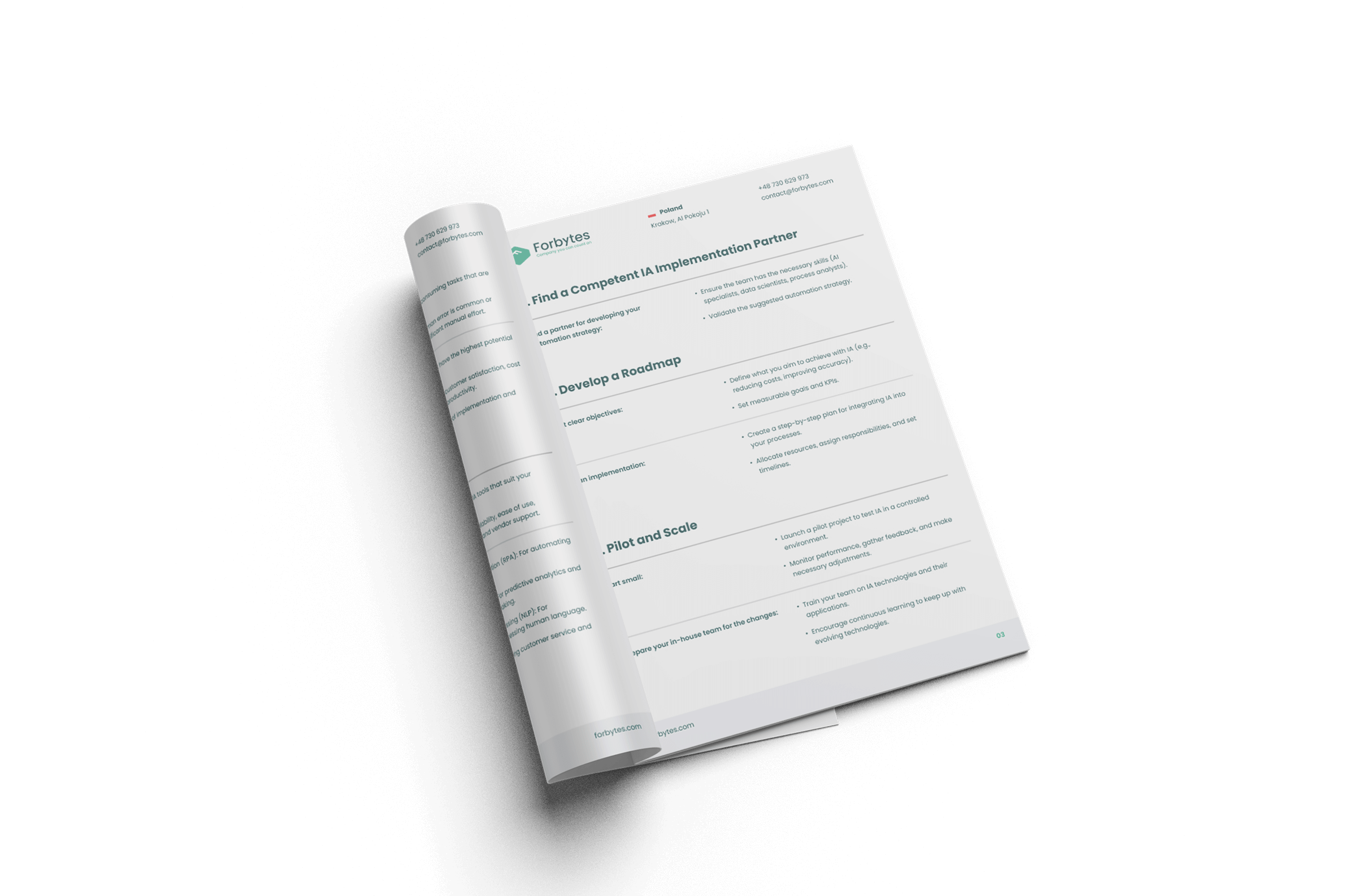Do you feel overloaded with insurance paperwork? We know a better way for you! Insurance agency management systems can become your assistants. They can help you get organized, communicate easily, and boost efficiency. Plus, this software can even automate marketing and spot sales opportunities, all while keeping you compliant.
With so many options, finding the right fit can be tough. That’s why we’ve highlighted some of the top insurance agency management systems for 2025. Over 80% of agencies struggle with slow processes, leading to lost revenue. An intelligent automation tackles this head-on, improving policy management and customer service.
We’ll walk you through the top solutions to help you make smart choices and grow your insurance business. Ready for a simpler, more efficient way to work? Let’s dive into the best systems out there!
What Is an Insurance Agency Management System?
An insurance agency management system is a software solution designed to help insurance businesses manage all their tasks more efficiently.
Think of it as a central hub that combines all your information and processes. By doing this, these systems simplify your workflows and boost your overall efficiency.
What’s more, insurance agency management systems often come with analytics and predictive analytics tools that give you valuable insights into how your business is doing. So, you can make smarter, data-driven decisions. Many also let you connect with other software you use, making everything work together even better for your insurance company.
Main Features to Look for in Insurance Agency Management Software
Choosing the right insurance agency management system is a critical decision, so it’s important to make sure the option you choose meets your specific needs. But how do you pick a quality solution? Here are some key features to look for:
- Policy lifecycle management: Insurance agency management systems should efficiently handle all stages of a policy, from initial quote to renewal or termination. Consider features like automated renewal reminders and easy policy updates.
- Claims management: A robust claims management module will streamline the claims process. So, you can process claims faster, communicate with policyholders, and detect emerging fraud.
- Customer & contact management: A centralized CRM system is vital for maintaining a 360-degree view of your clients, enabling personalized service and targeted communication.
- Workflow automation: The ability to automate repetitive tasks, such as data entry, document handling, and task assignments, can significantly improve efficiency and reduce errors.
- Reporting and analytics: Look for insurance agency management systems that offer customizable reports and dashboards to gain insights into key performance indicators (KPIs) and support strategic decision-making.
- Integration capabilities: The IMS should seamlessly integrate with other essential tools your business uses, such as accounting software, marketing platforms, and communication systems.
- Data security and compliance: Given the sensitive nature of insurance data, the system must have robust security measures, including data encryption and role-based access control, and comply with industry regulations.
- Customization and scalability: The software should be adaptable to your specific business needs and scale as your agency grows.
- Mobile accessibility: Access to insurance agency management software from any device is crucial for both agents and customers alike.
If you’re looking to build an insurance agency management system with custom features, contact Forbytes. We have the expertise to help you succeed.
Best Insurance Management Systems and Tools on the Market
Here are some of the leading insurance agency management systems and tools that modern insurers use:
EZLynx Management System
EZLynx is known for its comparative rating and agency management capabilities. It offers a comprehensive suite of tools for managing policies, clients, and communications.
Key Features:
- Policy management: This feature allows agencies to handle the entire lifecycle of insurance policies.
- CRM: It helps agencies manage client interactions and relationships effectively.
- Rating and quoting: It’s a comparative rating tool, allowing agents to obtain quotes from multiple carriers.
- Communication tools: They facilitate seamless interaction with clients and within the agency.
- Reporting: It tracks key performance indicators and gains insights into agency operations.
Pros: User-friendly interface, strong rating capabilities, good for independent agencies.
Cons: Some users report limitations in customization.
Best for: Independent insurance agencies looking for an integrated rating and management system.
How can you benefit from using it? With EZLynx, you can manage policies, clients, and quotes all in one place by saving time and reducing manual work. It also helps you improve customer service, track performance, and grow your agency more efficiently.
Applied Epic
Applied Epic is an insurance agency management system that offers a broad range of features designed for managing complex insurance operations
Key Features:
- Policy management: Comprehensive tools for managing the entire insurance policy lifecycle.
- CRM: Robust capabilities for managing client interactions and relationships.
- Claims management: Functionality to track and manage insurance claims processes.
- Accounting: Integrated accounting features for managing agency financials.
- Automation tools: Features to automate repetitive tasks and streamline workflows.
- Reporting and analytics: Tools for generating reports and gaining insights into agency performance.
Pros: A suite of features, well-established and widely adopted in the industry, designed for complex operations.
Cons: Can be a significant investment, may require dedicated training for full utilization.
Best for: Mid-sized to large insurance agencies with complex operational needs looking for an established management system.
How can you benefit from using Applied Epic? Applied Epic helps your agency work smarter by putting everything: policies, clients, claims, and accounting in one place. It saves time by automating routine tasks and gives you clear reports to make better business decisions and grow your agency.
HawkSoft
HawkSoft is an insurance agency management system that prioritizes a user-friendly experience and efficient workflows specifically designed for independent insurance agents.
Key Features:
- Policy management: Tools for managing insurance policies throughout their lifecycle.
- CRM: Features to effectively manage client interactions and relationships.
- Claims tracking: Functionality to monitor and manage the status of insurance claims.
- Accounting: Integrated features for managing agency financials.
- Reporting: Capabilities to generate reports and gain insights into agency performance.
- Mobile app: Provides agents with access to key information and functionalities on the go.
Pros: User-friendly interface, designed for independent agents, offers mobile accessibility.
Cons: May not have the same level of advanced features as systems designed for larger or more complex operations.
Best for: Independent insurance agents seeking a user-friendly and efficient management system with mobile accessibility.
How can you benefit from using HawkSoft? HawkSoft is easy to learn, helping your team get up to speed quickly and work more efficiently. With its mobile app and built-in tools for managing policies, clients, claims, and reports, you can handle tasks from anywhere and focus more on growing your business.
Vertafore
Vertafore offers a suite of insurance management solutions designed to cater to various agency sizes and needs, including well-known agency management systems like AMS360 and Sagitta.
Key Features:
- Policy administration: Tools for managing insurance policies and related processes.
- CRM: Features for managing client interactions and relationships.
- Accounting: Capabilities for managing agency financials.
- Compliance tools: Features to assist with regulatory requirements and compliance.
- Workflow automation: Tools to automate repetitive tasks and streamline agency operations.
Pros: Offers a range of solutions for different agency types and sizes, including tools for compliance and automation.
Cons: As a suite of products, the specific strengths and weaknesses can vary between their different systems (e.g., AMS360 vs. Sagitta).
Best for: Insurance agencies looking for a provider with a variety of management solutions to match their specific size and operational complexity, with a focus on compliance and workflow automation.
How can you benefit from using Vertafore solutions? Vertafore offers insurance tools that fit your agency’s size and needs. With built-in compliance support, automation, and features for managing policies, clients, and accounting, it helps you save time, avoid errors, and run your business more smoothly.
Salesforce for Insurance
Based on the power of the Salesforce platform, this solution provides a customizable CRM and agency management capabilities tailored for the insurance industry.
Key Features:
- CRM: At its core, this feature provides a 360-degree view of your customers and prospects.
- Lead management: This functionality helps insurance agencies capture, track, and nurture potential clients (leads).
- Marketing automation: This feature enables insurers to automate marketing tasks and campaigns.
- Policy management integrations: This indicates the platform’s ability to connect with and exchange data with existing policy administration systems.
- Analytics: This feature provides tools for analyzing data related to customer interactions, sales performance, marketing campaign effectiveness, and policy information (through integrations).
Pros: Highly customizable, strong CRM capabilities, integrates with a vast ecosystem of apps.
Cons: Can be expensive and complex to set up and customize without Salesforce expertise.
Best for: Agencies looking for a CRM-centric approach with extensive customization options.
How can you benefit from using Salesforce for Insurance? Salesforce helps you build better client relationships and keep all customer and policy data in one place. It’s easy to customize, supports marketing automation, and connects with other tools to fit your agency’s unique workflows.
Vitaminise by DICEUS
Vitaminise is a next-generation Customer Experience (CX) automation and data platform designed for the insurance industry. It comprises five integrated products to empower insurers to offer enhanced self-service capabilities and create seamless customer journeys.
Key Features:
- Mobile app: Provides customers with self-service options such as policy purchases and claim submissions.
- Chatbot: Offers instant customer support and handles common inquiries.
- Web portal: Delivers an online interface for policy management and service access.
- Customer feedback tool: Gathers valuable insights to improve customer experience.
- Data analytics: Provides data-driven insights for better decision-making and personalized customer interactions.
- Self-service policy purchases and claim submissions: Enables customers to manage core insurance tasks independently.
- Complimentary services: Facilitates appointment scheduling and access to telemedicine.
- Omnichannel capabilities: Products can be implemented individually or as a unified system for a consistent customer experience across all touchpoints.
Pros: Enhances customer self-service and convenience, improves customer engagement through multiple channels, and provides valuable data insights for business optimization.
Cons: Integration with existing legacy systems might require careful planning; the effectiveness of the chatbot depends on its AI capabilities and training.
Best for: Insurance companies looking to modernize their customer experience and offer self-service options.
How can you benefit from using Vitaminise by DICEUS? Vitaminise helps you keep your customers happy by making it easier for them to get help on their own anytime, anywhere. With tools like chatbots and a mobile app, it saves you money, gives your support team more time, and helps you understand your customers better so you can offer a more personal experience and grow your business.
Openkoda
If your agency needs flexible tools that fit your unique way of working, Openkoda is a great choice. Unlike ready-made solutions, it lets you customize everything like client portals, quote forms, or dashboards, without being stuck in a fixed system. You get the freedom to build what you need, your way.
Key Features:
- Bespoke platform: Designed to meet the evolving needs of the insurance industry.
- Operational workflow refinement: Capability to enhance and streamline internal processes.
- Custom functionality: Options to add features based on unique business requirements.
- Complete policy management: Tools for handling the entire policy lifecycle.
- Online client portal: Enables self-service and improved communication for clients.
- All-in-one toolkit: A suite of ready-to-use functionalities.
- No vendor lock-in: Provides greater control and flexibility over your system.
- No user-based pricing: Offers a potentially more cost-effective scaling solution.
Pros: Highly flexible and customizable, empowers agencies to build tailored solutions, no vendor lock-in, potentially cost-effective for larger teams.
Cons: May require more technical expertise or development resources for extensive customization.
Best for: Insurance agencies that prioritize flexibility, require significant customization to meet their unique business needs, and want to avoid vendor lock-in and per-user pricing models.
How can you benefit from using Openkoda? Openkoda lets you customize your insurance system to fit your agency’s needs, making it more flexible than ready-made solutions. It saves costs and gives you more control by avoiding vendor lock-in and per-user fees.
AMS360
AMS360 is a top choice for midsize agencies, known for its easy-to-use interface and powerful policy management tools. It also connects seamlessly with carrier systems, helping agencies streamline daily tasks and work more efficiently.
Key Features:
- User-friendly interface: Designed for ease of navigation and adoption.
- Strong policy management: Tools for handling the insurance policy lifecycle.
- Carrier system integrations: Streamlines workflows by connecting with various insurance carriers.
Pros: User-friendly interface, strong policy management capabilities, simplifies operations through carrier integrations.
Cons: Requires a significant financial and training investment.
Best for: Midsize insurance agencies looking for a user-friendly system with robust policy management and carrier connectivity.
How can you benefit from using AMS360? AMS360 helps midsize agencies work more efficiently with an easy-to-use system for managing policies. It connects smoothly with insurance carriers, reduces manual work, and improves communication. While it requires an investment, it can save time, simplify daily tasks, and support long-term growth.
NowCerts
NowCerts is a cloud-based agency management system known for its easy-to-use interface and scalability, making it a flexible solution for insurance agencies looking to grow.
Key Features:
- Easy to use: Simple layout that’s easy to learn and navigate.
- Access anywhere: Work from any location with internet.
- Flexible and scalable: Grows with your agency’s needs.
- Document management: Stores all client and policy documents in one place to stay organized.
- Reports and analytics: Tracks sales, renewals, and client activity to help you make smart choices.
- Communication tools: Built-in messaging and email features to stay connected with your team and clients.
Pros: User-friendly, offers the flexibility of cloud-based access, and can scale with agency growth.
Cons: Specific advanced features might vary depending on the plan.
Best for: Insurance agencies of various sizes seeking a user-friendly, cloud-based platform that can accommodate their growth.
How can you benefit from using NowCerts? NowCerts is easy to learn, helping your team get up to speed quickly and work more efficiently. Since it’s cloud-based, you can manage your agency from anywhere. Plus, it grows with your business, so there’s no need to switch systems as you expand.
Majesco P&C Intelligent Core Suite
The Majesco P&C Intelligent Core Suite is a software solution tailored for property and casualty insurers, encompassing tools for workers’ compensation, personal, and commercial lines. It provides a valuable set of integrated features designed to streamline key insurance processes and simplify task fulfillment.
Key Features:
- Policy management: Tools for managing the entire policy lifecycle across various P&C lines.
- Billing operations: Streamlined processes for premium billing, collections, and payment management.
- Claims processing: Efficient workflows and tools to manage the end-to-end claims lifecycle.
- Simplified task fulfillment: Features designed to automate routine tasks and improve operational efficiency.
Pros: Integrated suite covering core P&C insurance functions, supports various lines of business, aims to simplify operational tasks.
Cons: Implementation of a core suite can be complex and require significant resources.
Best for: Property and casualty insurance carriers looking for an integrated core system to manage their policy, billing, and claims operations across personal and commercial lines.
How can you benefit from using the Majesco P&C Intelligent Core Suite? Majesco gives your insurance company one platform to manage policies, billing, and claims all in one place. This makes daily work easier, cuts down on manual tasks, and keeps your data consistent. It supports different types of insurance and can grow with your business, helping your team work more efficiently.
This is not a complete list. The best system for your business depends on your specific needs, budget, and agency size. At Forbytes, we recommend custom solutions, as they can be tailored to your goals and include only the features that matter most.
If you need a unique insurance agency management system, contact our team. We’re here to help.
Deploy an Insurance Management System with Ease
Choosing the right insurance agency management software is just the beginning. Integrating it seamlessly into your existing workflow and customizing it to fit your business can make all the difference.
At Forbytes, we help insurance providers build, select, integrate, and scale the right digital tools for long-term success. Whether you need API integrations, a custom dashboard, or help migrating legacy data, our team is here to support your growth.
Let’s build a smarter, more connected insurance tech stack together!

Our Engineers
Can Help
Are you ready to discover all benefits of running a business in the digital era?

Our Engineers
Can Help
Are you ready to discover all benefits of running a business in the digital era?



















